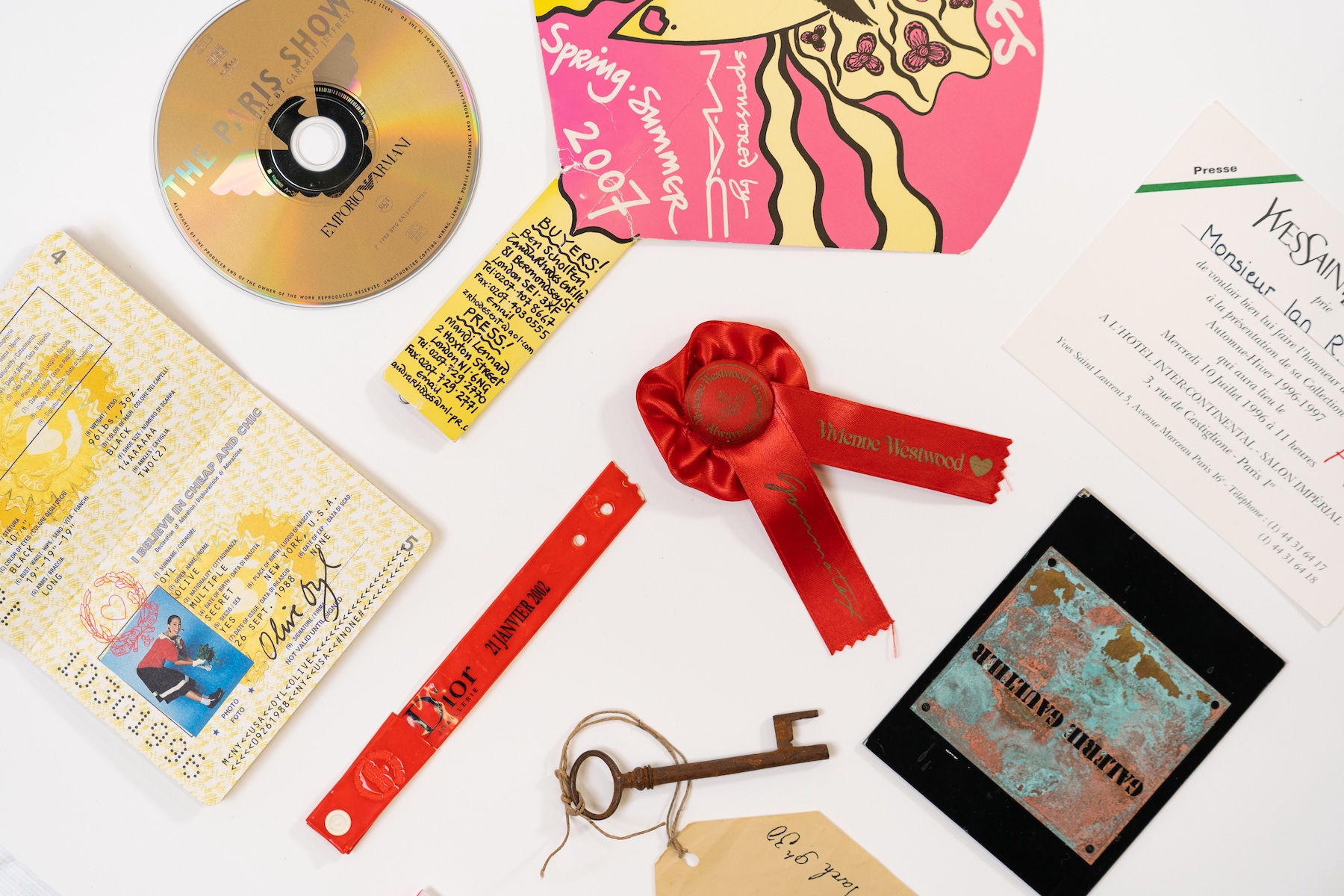
During his multi-decade career as a fashion editor helming the style pages of titles such as BLITZ, Elle, The Times and The Evening Standard, Iain R Webb accumulated a substantial amount of fashion week ephemera, from significant notes and kitsch invitations to sketchbooks and physical photographs, shot on his Olympus and printed at Snappy Snaps. ‘When people are being very nice, they call me a collector,’ he says, speaking by phone from Dundee during the install for ‘The Fashion Show: Everything But The Clothes’ (3 June 2023 to January 2024) at the V&A’s Scottish design museum. Largely composed of his personal collection, the new exhibition additionally features objects belonging to industry heavyweights like Val Garland, Hamish Bowles, Ibrahim Kamara and Helmut Lang.
‘The Fashion Show: Everything But The Clothes’ at V&A Dundee
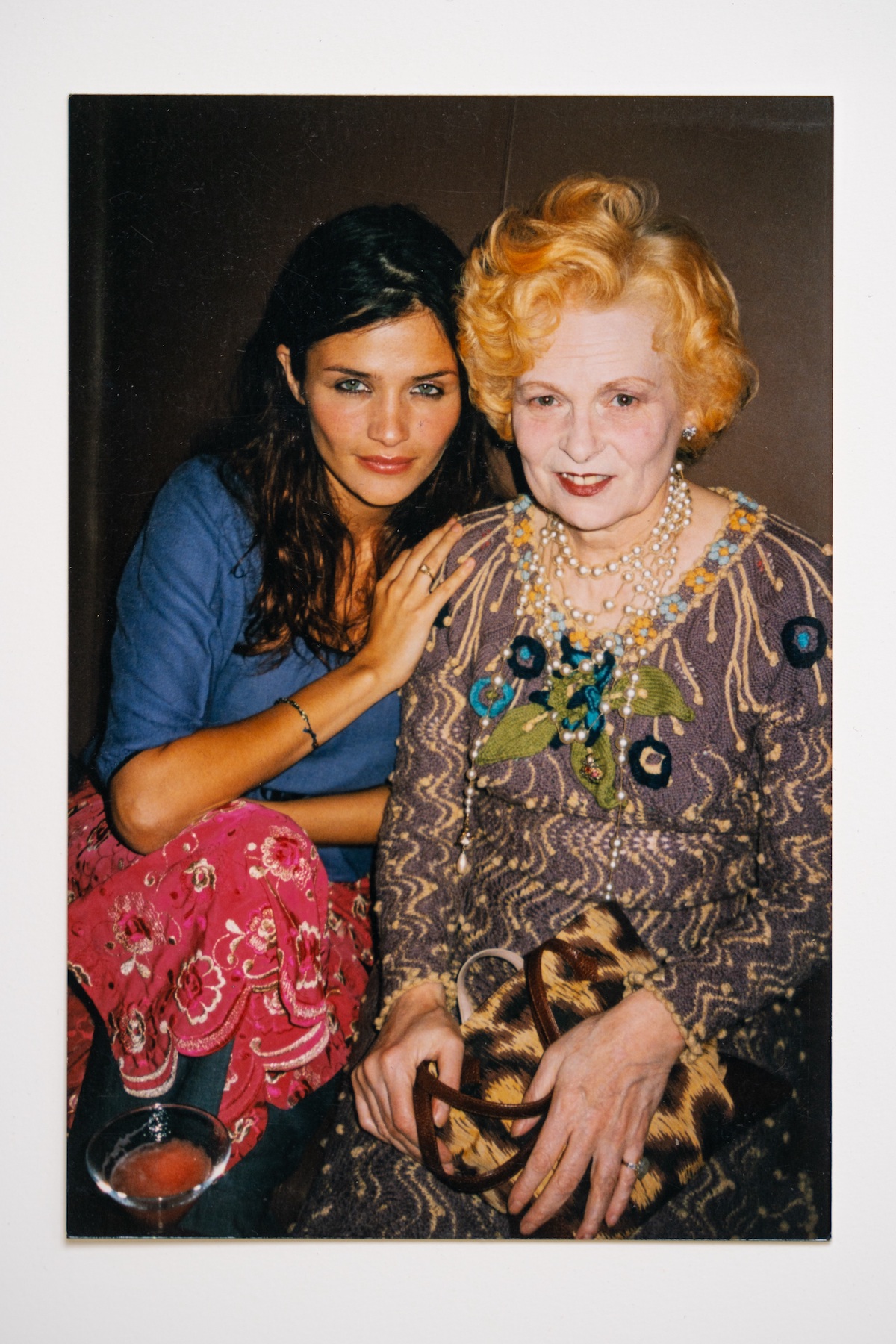
‘The idea was bringing different themes together and unpacking the fashion show experience through my personal archive,’ explains Webb, who is currently a professor of Fashion and Design at Kingston School of Art and an associate lecturer at Central Saint Martins and Bath Spa University, as well as the author of several books including ‘Postcards from The Edge of The Catwalk’ (2010). Described by photographer Nick Knight as ‘an incredibly natural vision of the impossibly unnatural world of fashion’, the title is a personal portfolio covering three decades; ‘Everything But The Clothes’, open now through January 2024, functions as a kind of counterpart, expanding the narrative to highlight a further, traditionally hidden component of the industry.
Curated in association with the V&A’s Francesca Bibby, the exhibition’s emphasis is on this wider creative community which makes fashion shows happen, from the backstage teams of hair and makeup to the DJs and sound engineers, and the graphic designers and set designers whose handwriting shapes the architecture that surrounds a fashion show. ‘Fashion exhibitions are usually full of dresses, but here there are no clothes, it's about the different practices and the brouhaha around the catwalk,’ says Webb. ‘Everything around the designer has been designed specifically to present an image of fashion in some way, so although it’s from my archive, it’s hopefully telling lots of different people's stories.’
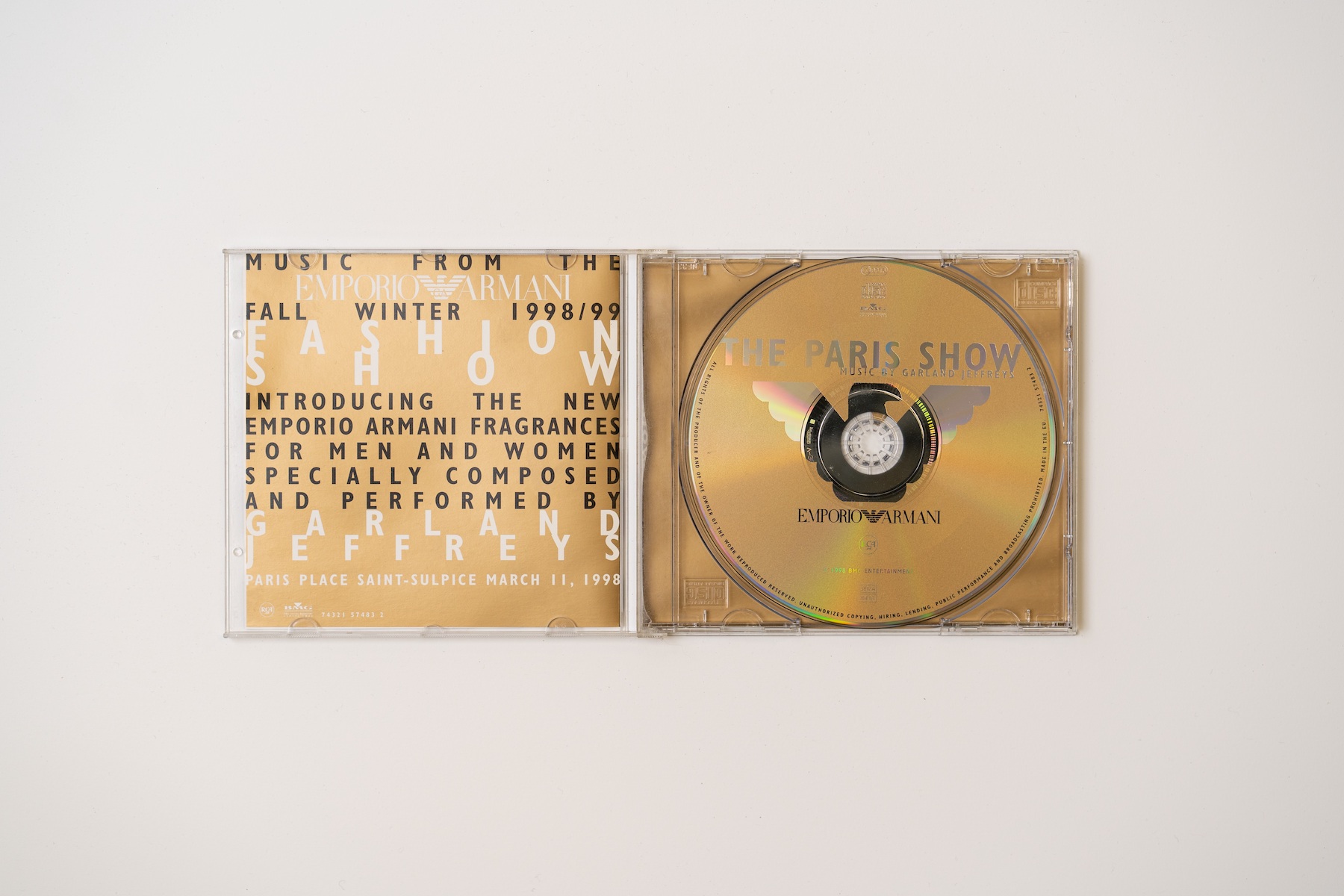
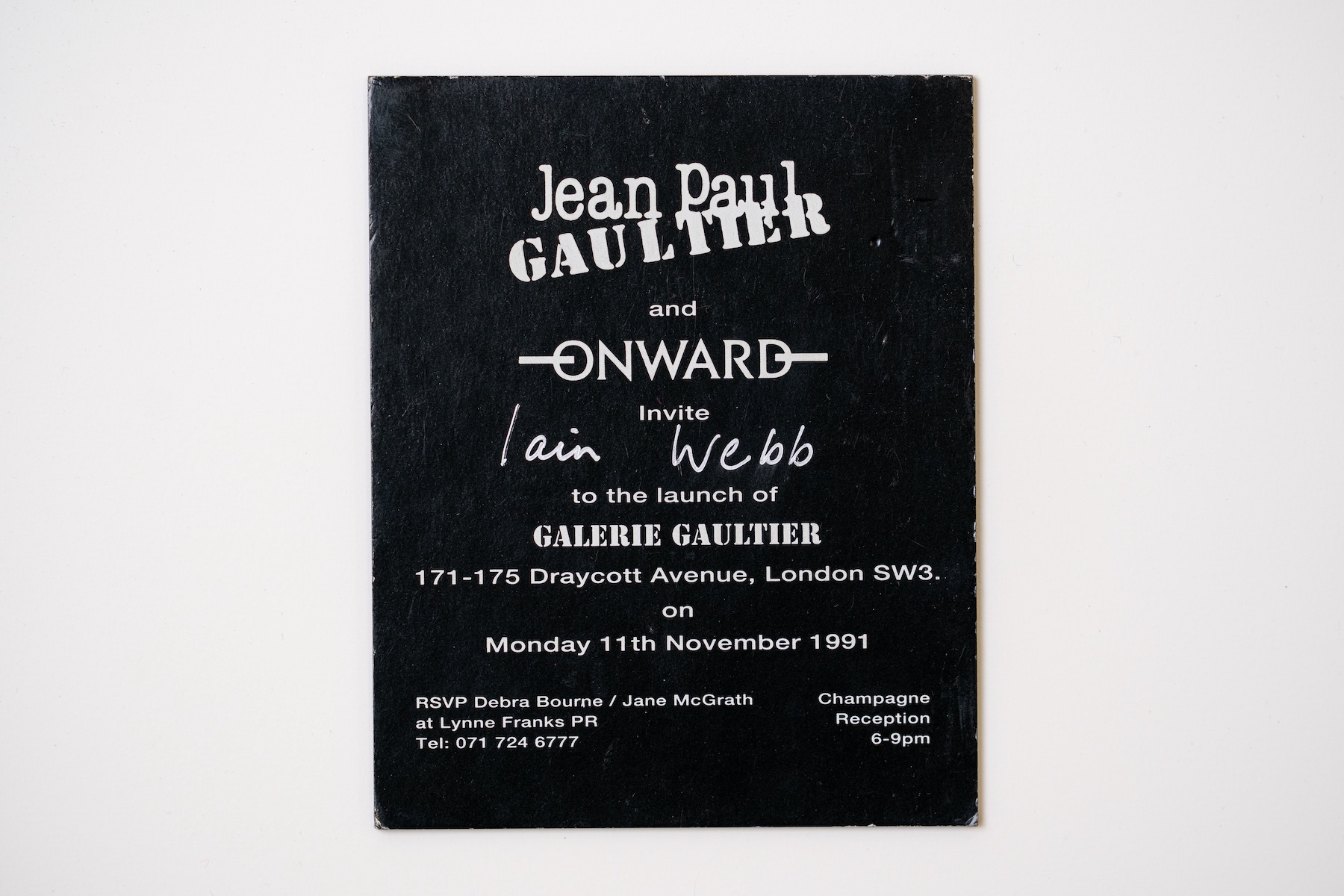
In particular, there is a focus on drawing as a form of communicating ideas that runs through the show, says Webb, referencing his own practice as well as the work of Alex Mein and Jacky Marshall. ‘I always drew, that’s how I process the clothes on the catwalk, and then with the cameras, it was like documenting a holiday,’ he notes, alluding to the classic 6x4 format. ‘I used them in editorials a lot, because I realised the value – the access I had with a tiny point-and-shoot.’ Like much of the material that features – about 500 objects collected over four decades – today the photographs read as an important example of the changing cultural landscape, documenting a period of time, mostly pre-digital, as much as the clothes themselves. Brought together with the other pieces, they underscore the editor’s role as an interpreter and anthropologist.
‘I kept so many invitations because they were beautiful objects that somebody had probably spent months considering, creating, constructing,’ says Webb. ‘And that story of design is really key [in the exhibition]. Everything has been designed by somebody – even the cameras I've used.’ The exhibition similarly engages with the storytelling that unfolds during fashion week, announced outside the museum with a promotional poster from 1993: Tom Jenkins’ image of Emma Balfour walking the Helmut Lang S/S 19994 show, originally used to illustrate a Sally Brampton story on the cover of The Guardian’s G2 supplement. ‘It really represents the exhibition, and at the beginning we kind of tell the story of the exhibition through Lang,’ says Webb. ‘I always had a relationship with him as a fashion editor, so it’s really special to be able to extend that now we're both in different worlds, not in that day-to-day, jobbing fashion world.’
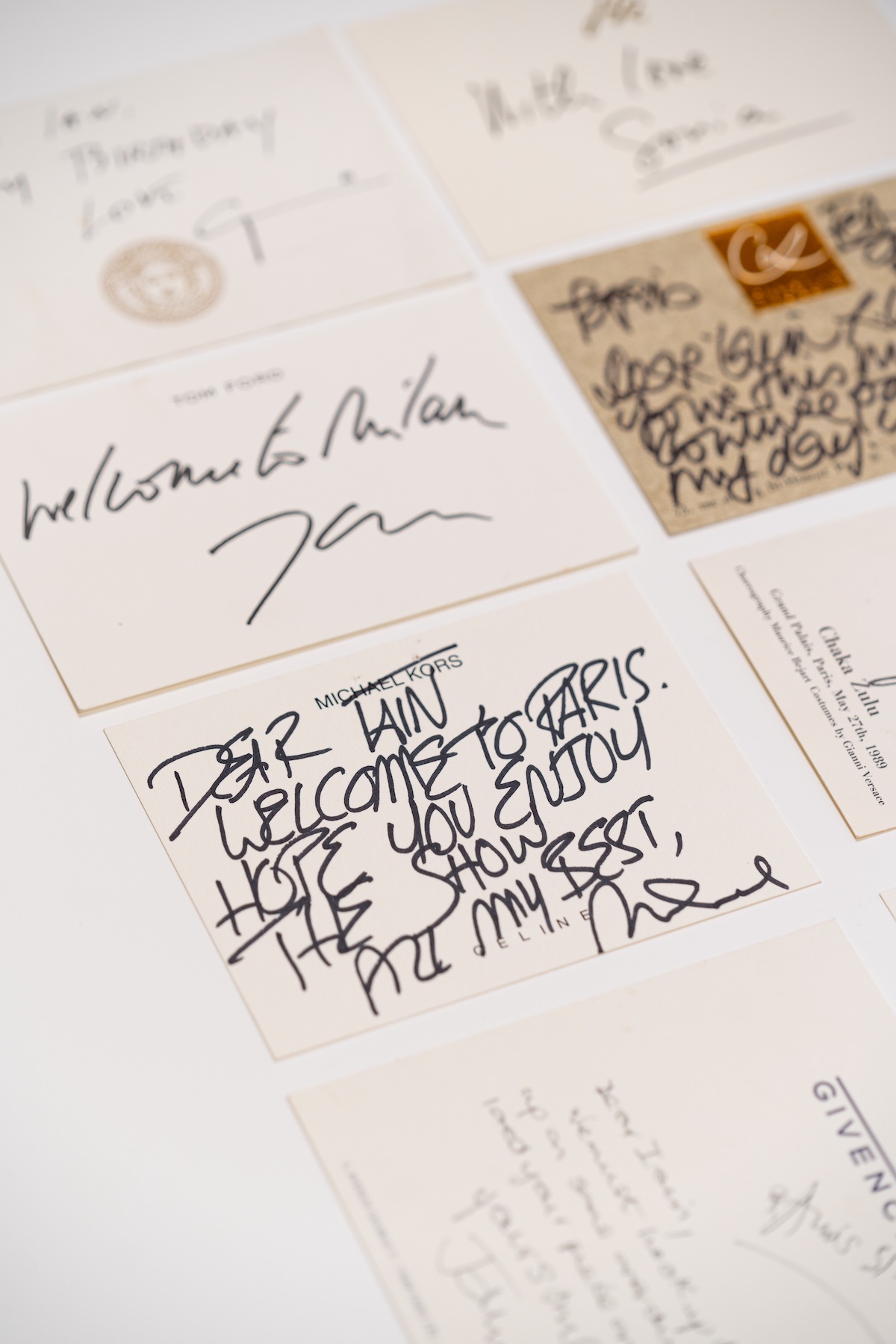
Reflecting on the role of the fashion show today – a question the new exhibition is sure to invite – Webb suggests that their function has changed massively. ‘The exhibition is called “Everything But The Clothes” and in the past, it was all about the clothes – now they’ve become presentations, installations, dramatic pieces, and it seems the emphasis is on the experience,’ he says, acknowledging that most of the stuff featured in the exhibition, primarily from an era before social media, will have only been seen by a few hundred people. ‘It's a very different world, it's not that sort of dictatorial fashion anymore, it's much more individualistic, and I suppose more interactive.’
‘The Fashion Show: Everything But The Clothes’ is on at V&A Dundee from June 3 2023 to January 2024.







